Affiliate links on Android Authority may earn us a commission. Learn more.
Arm Immortalis-G715 deep dive: Ray tracing graphics for mobile
Published onJune 28, 2022
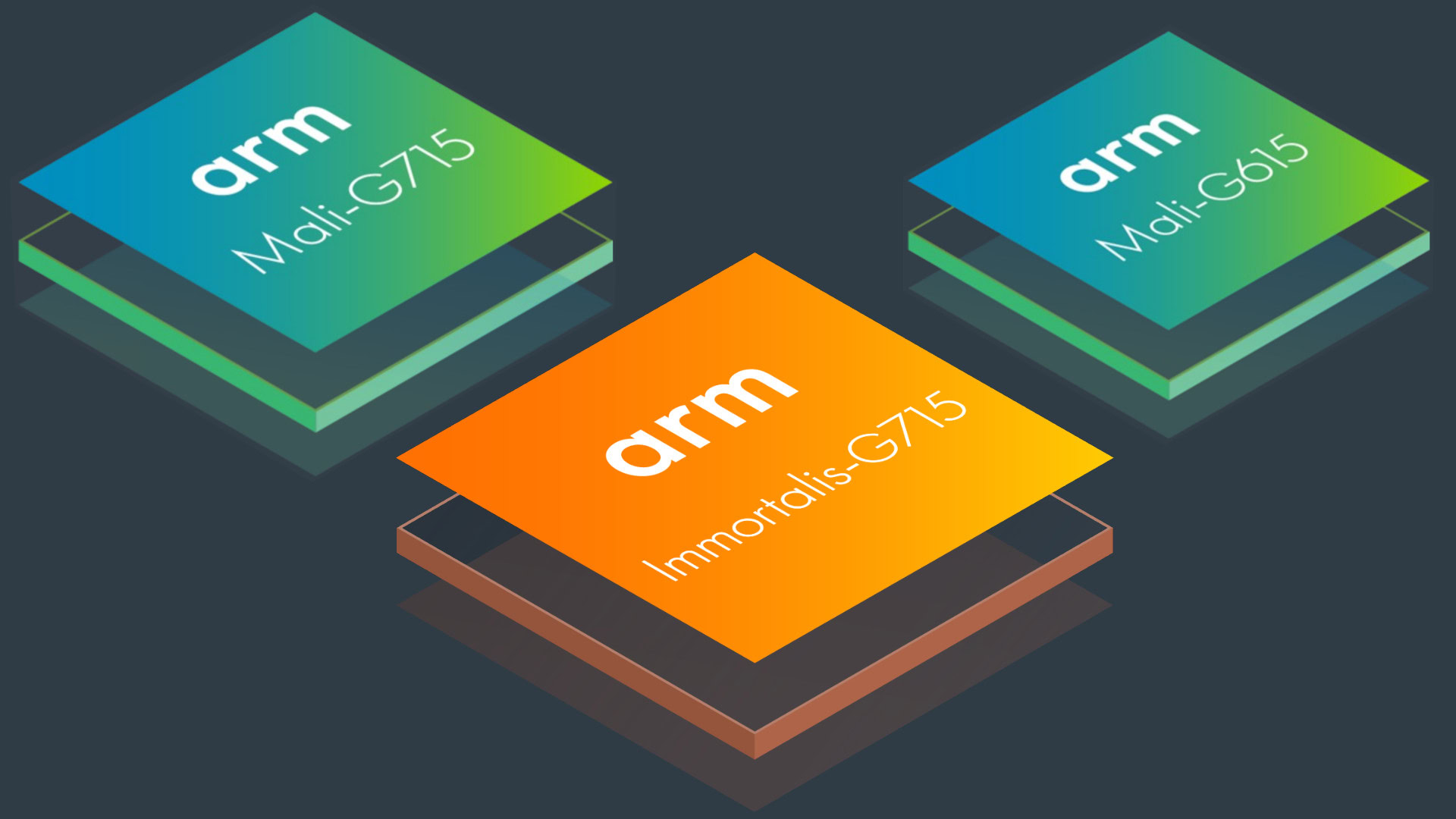
Along with its next-generation CPUs, Arm has lifted the lid on its latest graphics cores that could power smartphones and other gadgets in 2023 and beyond. There will technically be three GPU options in this generation: the Immortalis-G715, regular Mali-G715 sans ray tracing, and a mid-tier Mali-G615 configuration.
This year’s headline grabber is the introduction of hardware ray tracing support. which falls under Arm’s new Immortalis branding. Arm also touts a 15% ISO-process performance gain for all its latest GPUs, along with a 2x machine learning improvement, and 15% better energy efficiency over the previous-gen Mali-G710.
We chatted with Arm’s graphics experts during the company’s annual Client Tech Day to learn more about exactly what’s new and what to expect from upcoming smartphones.
Read more: What Arm’s latest CPUs and GPUs mean for 2023 smartphones
4th-gen Valhall architecture overview
Arm’s latest GPUs are the fourth generation of its Valhall graphics architecture, which superseded Bifrost with 2019’s Mali-G77. At their core, Immortalis-G715, Mali-G715, and Mali-G615 share the same graphics DNA. There’s a revamped execution engine, which we’ll get to in a bit, along with support for Variable Rate Shading (VRS). VRS can boost performance by up to 40% by decoupling rasterization and shading frequencies. Variable Rate Shading has been supported in some mobile games for a while now, and Arm is now reaching feature parity with Qualcomm’s Adreno GPUs here.
Besides support for ray tracing, the only real difference between these GPUs is their supported core count and memory configurations. So expect to see Immortalis in flagship SoCs, and the G715 and G615 at slightly lower performance points. The table below offers an overview of how the setups compare.
| Arm 4th-Gen Valhall GPUs | Immortalis-G715 | Mali-G715 | Mali-G615 |
|---|---|---|---|
| Arm 4th-Gen Valhall GPUs Hardware Ray Tracing? | Immortalis-G715 Yes | Mali-G715 No | Mali-G615 No |
| Arm 4th-Gen Valhall GPUs Variable Rate Shading? | Immortalis-G715 Yes | Mali-G715 Yes | Mali-G615 Yes |
| Arm 4th-Gen Valhall GPUs Execution Engine Evolution | Immortalis-G715 Yes | Mali-G715 Yes | Mali-G615 Yes |
| Arm 4th-Gen Valhall GPUs Shader core count | Immortalis-G715 10-16 cores | Mali-G715 7-9 cores | Mali-G615 1-6 cores |
| Arm 4th-Gen Valhall GPUs L2 cache slices (up to 1,024kb) | Immortalis-G715 2 or 4 | Mali-G715 2 or 4 | Mali-G615 1, 2, or 4 |
Let’s double back to the revamped execution engine, which Arm calls its Execution Engine Evolution. As well as supporting Variable Rate Shading, there’s a tweaked fused multiply–add (FMA) block. There’s now double the number of FMA units in each core along with a dedicated multiply-accumulate (MMUL) block within each FMA. This has allowed Arm to double the maximum compute power, particularly for machine learning workloads, while only increasing the core’s area size by 27%. There are still two datapath clusters per engine, so four FMA units per core.
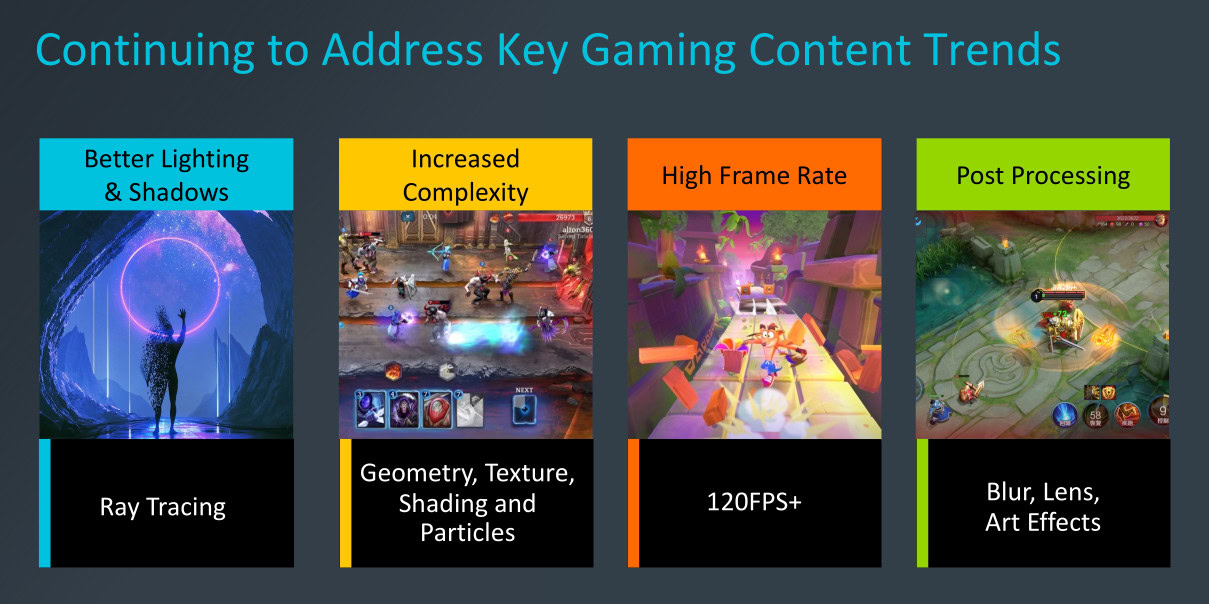
Arm has made other improvements across the broader shader core. There’s 3x peak triangle throughput in the Tiler for high-geometry games, 2x FP16 blender throughput, new FP16 hardware for multi-sample anti-aliasing, and 2x texture mapper speed for Level of Detail cases. Arm Fixed Rate Compression (AFRC) makes an appearance for the first time in the premium tier, having previously been included in lower-end cores that are typically more memory bandwidth limited. There’s now also a software programmable L2 hash (32K x 32K resolution), offering greater flexibility in hash algorithm choice for developers.
This is all a case of optimizing the graphics core for real-world workloads, allowing Arm to squeeze yet more performance and efficiency from its Valhal architecture, at least as far as its premium Mali cores are concerned.
Hardware ray tracing for flagship phones
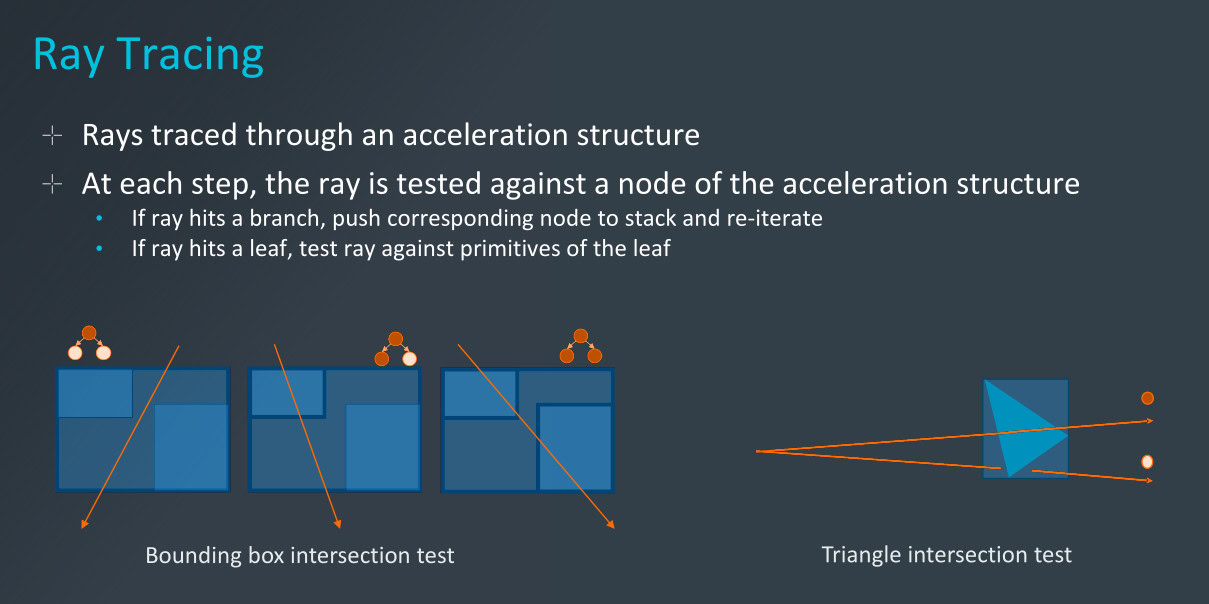
Ray tracing technology has, so far, been the crowning jewel in the PC and console graphics space, but for the first time, we now have dedicated hardware ray tracing support in Arm’s mobile GPU too. With support from the Vulkan ray tracing API, Arm’s Immortalis-G715 joins AMD’s Xclipse inside Samsung’s Exynos 2200 as ray tracing capable mobile GPUs. That said, ray tracing support can technically be added to the regular G715 and G615 too, if Arm’s partners wanted, although their smaller core counts are unlikely to produce a good ray tracing experience.
Ray tracing rendering simulates realistic lighting and reflections by tracing the path of light through a scene. This is accomplished by casting rays from the camera’s point of view and calculating where rays intersect geometry (triangles) and light sources in the scene.
Ray casting and calculating intersections is a computationally expensive task, especially at high resolutions. To speed this up, GPUs make use of dedicated hardware to accelerate these calculations. There are various forms of acceleration and optimization depending on how much ray tracing complexity is required. This results in different performance, power, and rendering capabilities between GPUs.
Arm’s Immortalis-G715 joins AMD's Xclipse inside Samsung’s Exynos 2200 as ray tracing capable mobile GPUs.
Arm’s Ray Tracing Unit (RTU) is an optional extra built directly into the shader core, rather than an external accelerator, meaning that performance scales as the core count increases. The tiny RTU takes up less than 4% of the shader core but provides over 300% better ray tracing performance, according to Arm’s benchmarks, than running without hardware acceleration. The RTU contains dedicated acceleration units for box and triangle bounding box detection, greatly speeding up the time taken to perform these calculations versus the standard FMA unit.
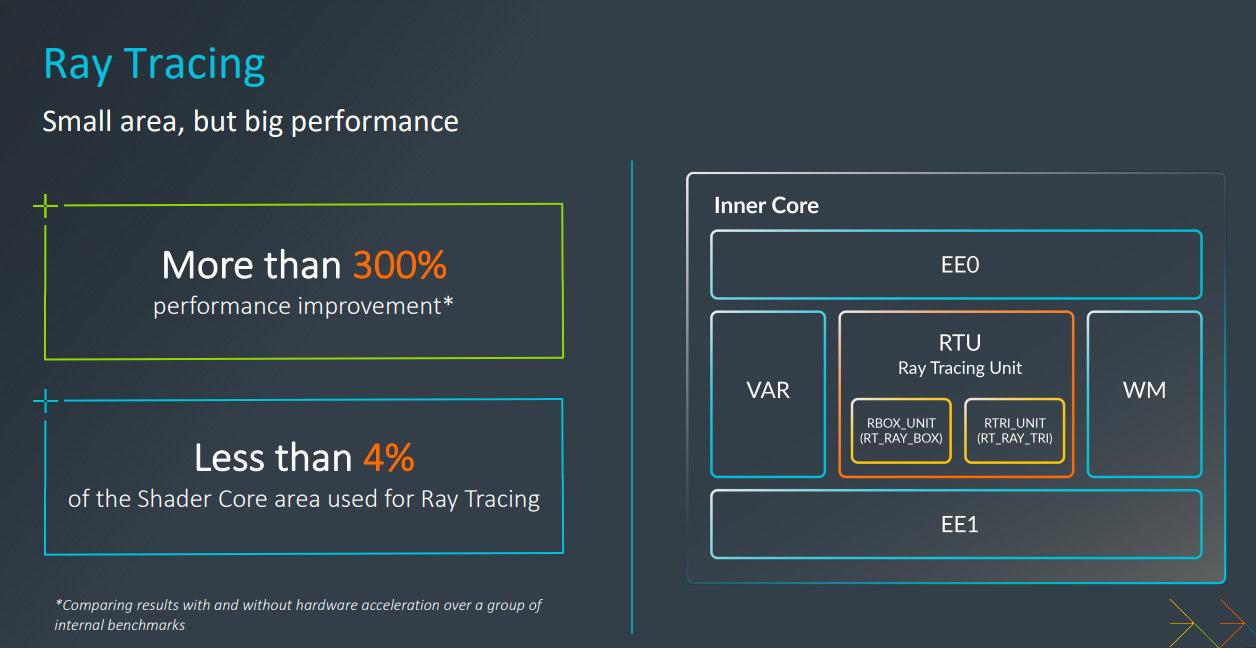
It’s worth noting that there are varying degrees of ray tracing support. Arm’s implementation doesn’t go as far as to accelerate Bounding Volume Hierarchical (BVH) processing, making it a more computationally expensive ray tracing implementation compared to support seen in games consoles, but with a smaller area and power cost. As such, we shouldn’t expect visual complexity or frame rates approaching that of the high-end space, although this was always somewhat expected given the power, performance, and area constraints of mobile versus desktop-tier graphics.
Arm, like other implementations, uses a hybrid rasterization and ray tracing method. As such, expect more modest enhancements to light, shadow, and reflections that can benefit from the use of rays, rather than a huge overhaul in graphical fidelity.
Immortalis-G715 take-aways
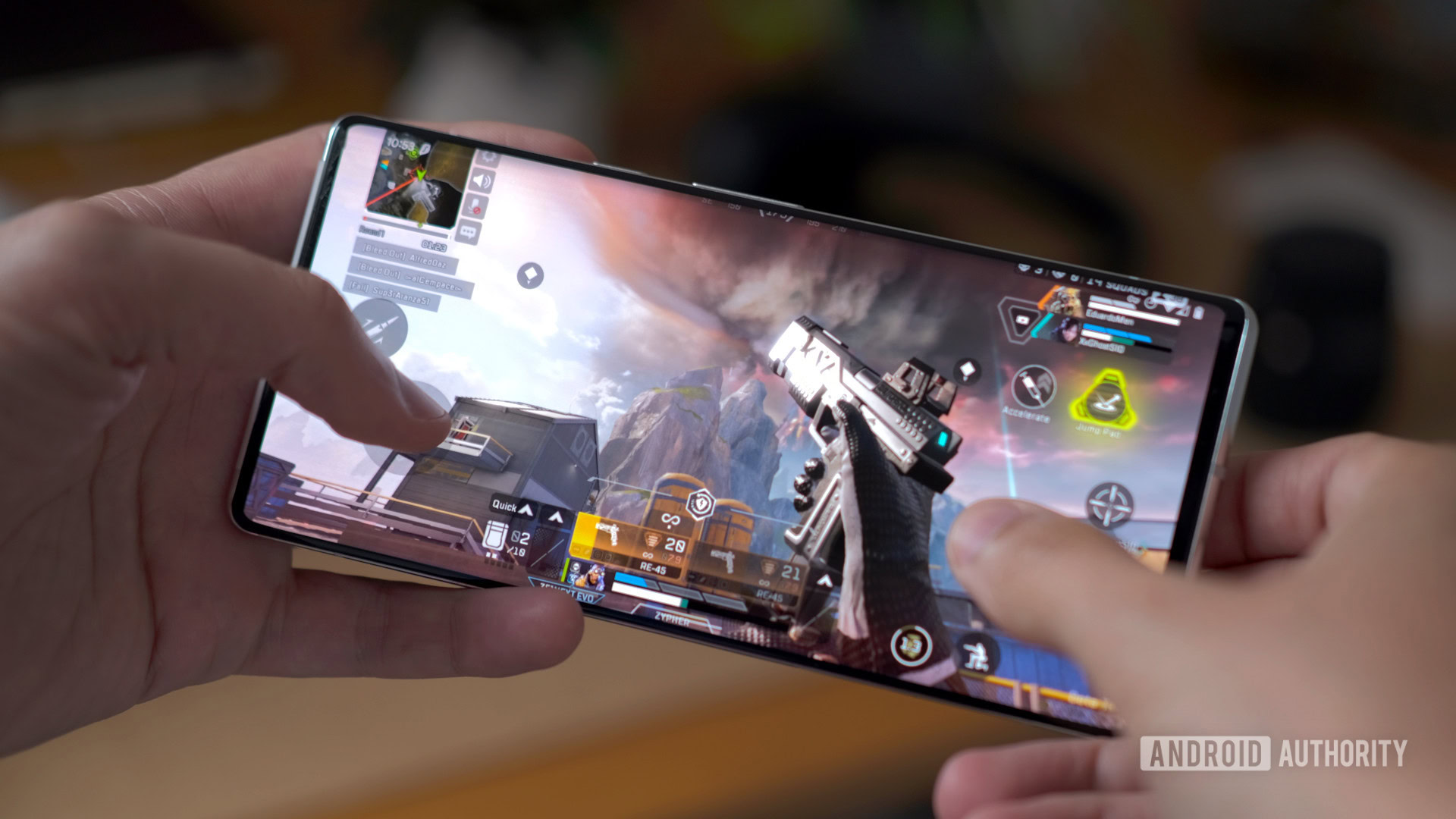
Immortalis-G715 and ray tracing, which are targeted at next-gen flagship mobile chips, are clearly the big talking point this generation. However, there are a lot of arguably more important general improvements here too, such as 15% better efficiency (not including gains from upcoming smaller manufacturing nodes), variable rate shading support, and a range of fine-tuning to suit real-world workloads — a boon for today’s mobile games, not just next-gen ones. However, we’ll have to see if this is enough to catch the market leaders in the frame rate department.
As nice as ray tracing hardware is, there’s still the big ecosystem question to answer. Even if MediaTek, Samsung, Google, and other SoCs sport ray tracing hardware in 2023, the software ecosystem is likely waiting on big volume players Apple and Qualcomm to make a move as well. Even then, it’s still not clear how quickly ray tracing will catch on, given that game developers want to target the widest range of consumers possible rather than just the latest flagship phones.
See also: The best gaming phones you can buy today
Still, at least the chick is out of the egg, and hardware support makes games with ray tracing support possible. Arm expects to see the first supporting titles appear alongside the arrival of the Immortalis chipsets, which should be sometime in early 2023.